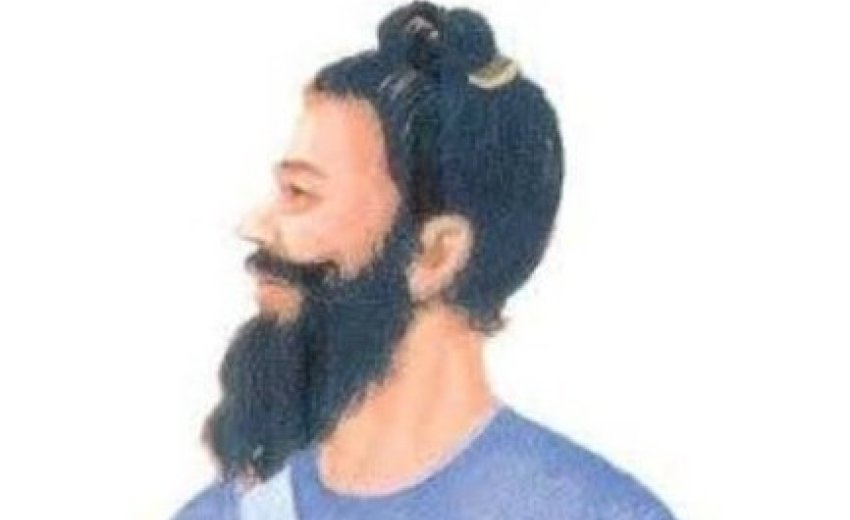One belief is that a devout Sikh's head is an offering to the Guru, with long hair showing devotion and commitment.
Almost every Sikh is asked at least once in a lifetime, ‘Why do you keep long un-cut hair?’. Well, this question carries different answers, depending on a person’s point of view. Let’s go through different people’s perspectives behind this strong belief which holds utmost importance for the Sikh community.
Kesh: One of the five Ks in Sikhism
Keeping uncut hair, known as "kesh," is an important part of the Sikh faith.
Here's a short overview of why Sikhs choose to keep their hair long and uncut. People have various reasons for this practice, and what resonates with one person might not with another. Hopefully, this list can help you discover your own reasons too.
Faith: Gurus Said to Keep Long Hair.
Having faith means you do things without needing a clear reason. The Gurus advised keeping long hair, so this person follows their guidance without questioning it.
Link With The Guru
Trilochan Singh, in "The Turban and Sword of the Sikhs," explains that Sikhs often maintain long hair as a reflection of their Gurus, who also kept long hair. This practice is seen as a way to honour the Gurus' lives and follow their example. Long hair helps Sikhs feel a connection to their Gurus. It's a physical similarity they share, reminding them to embody the qualities their Gurus represented. In Sikh belief, long hair is like a seal of approval from the Guru, authenticating the Sikh as a disciple.
Some see long hair as a symbol of the spiritual link between Sikhs and their Gurus' power. It's considered an emblem of the valuable qualities within a Sikh's soul. Another reason for keeping long hair is based on Guru Gobind Singh's command in 1699. He ordered Sikhs to maintain the "5Ks," including uncut hair. This command is mentioned in historical documents and codes of conduct from that time, emphasising the importance of keeping hair unshorn as a mark of Sikh identity.
Spirituality
In ancient India, Hindu sages and ascetics often kept long hair and beards tied in a knot. Gurdev Singh suggests in his paper, "Respectives on the Sikh Tradition," that Guru Gobind Singh wished his Sikhs to be both householders and practical saints. In India, having long hair, known as kesh, is seen as a symbol of saintliness or holiness. It reminds Sikhs to emulate the saints and Rishis of old.
One belief is that a devout Sikh's head is an offering to the Guru, with long hair showing devotion and commitment, as suggested by Manasukhani and Gobind Singh. Others, like Gurdev Singh, believe kesh shows dedication to serving God and humanity. Sidhu adds that kesh is a sign of dedication to the Guru. Sukhmandir Khalsa explains that keeping kesh honors truth, as hair always asserts itself despite attempts to change or hide it. Khalsa also suggests that kesh benefits both body and soul, acting as a spiritual antenna during meditation and fostering humility.
Individual Development
Some Sikhs choose to keep long hair because they believe it represents being a complete and natural person, reflecting a spirit free from worldly concerns. They see it as a way to maintain their identity and integrity, according to Pamela Margaret Wylam. Sikhs also see their long hair as a symbol of sovereignty, showing their detachment from societal fashion trends and standards of beauty. By keeping their hair uncut, they assert their freedom from conforming to external norms and only adhere to the standards set by their Gurus.
For many Sikhs, maintaining long hair is a practice of personal discipline. They believe that by regularly combing and washing their hair, they cultivate self-discipline, a core value in Sikhi, as Gurdev Singh explains. Some writers argue that keeping long hair helps to combat vanity. By preserving their natural hair, Sikhs are reminded to make conscious choices and confront their ego, according to Sukhmandir Khalsa.
In addition, keeping long hair is seen as a way to boost self-esteem. It allows individuals to experience courage, overcome fear, and embrace unconditional love, according to another perspective shared by Sukhmandir Khalsa. By maintaining their hair, Sikhs aim to eliminate the duality in their minds that may arise from cutting it. They believe that accepting themselves fully, including their physical appearance, helps establish inner peace and harmony with Waheguru's creation.
Panthic Development
Long hair is a shared feature among all practising Sikhs, serving as a vital link that binds them together. It fosters a sense of unity and reminds Sikhs of their shared religious, spiritual, and social goals. This connection is crucial in building collective consciousness within the Sikh community. GS Sidhu explains that long hair symbolizes dedication and fosters a shared consciousness among Sikhs. This collective consciousness encompasses shared beliefs, values, history, and moral attitudes, serving as a unifying force. According to sociologist Emile Durkheim, this shared consciousness creates solidarity and facilitates communal goals and progress.
Mary Kelsey, a sociology lecturer, highlights how collective consciousness brings Sikhs together to share resources and knowledge, enhancing their collective strength. Moreover, this collective consciousness encourages Sikhs to embody panthic values in their thoughts and actions, promoting positive behavior and discouraging negative actions. For instance, the visibility of Sikhs, with their long hair and turbans, encourages ethical behavior as individuals consider the impact of their actions on the reputation of the entire Sikh community.
Long hair also symbolizes kinship among Sikhs, reflecting their commitment to the teachings of the Guru and their dedication to serving both God and humanity. Gurdev Singh emphasizes that long hair unites Sikhs as equals in their devotion to the Guru's teachings. This sense of kinship further strengthens the bonds within the Sikh community, fostering a spirit of solidarity and mutual support.
Historical Connection
Throughout history, Sikhs have maintained long hair as a tradition. In today's world, continuing this practice serves to link present-day Sikhs with their rich historical heritage. This connection with the Sikh Panth of the past helps keep history vibrant and provides strength to Sikhs, as highlighted by Singh and Trilocan.
A uniform Sikh identity
The Sikh Coalition says that keeping long hair, known as kesh, is an important part of a Sikh's everyday appearance. It helps identify someone as a Sikh and sets them apart from people of other religions. This tradition also shows support and solidarity among Sikhs.
Some believe that the tradition of keeping long hair dates back to a desire for Sikhs to have a strong and bold appearance, similar to warrior tribes in the Afghan frontier. Gurdev Singh suggests that the Gurus wanted Sikhs to have an impressive and intimidating look, hence the mandate to keep kesh.
Keeping kesh is seen as a simple and affordable way for Sikhs to express their faith. Gurdev Singh emphasizes that it's a uniform that doesn't cost any money, making it accessible to all Sikhs, regardless of their financial situation. This tradition connects Sikhs to the Khalsa and is seen as a natural expression of their identity.
Equality
When Singhs choose to grow their hair long, traditionally considered a "feminine" trait, it lessens the visible differences between Kaurs and Singhs. These differences, known as sexual dimorphism, are the noticeable physical distinctions between males and females of a species. Research shows that as sexual dimorphism decreases in a species, social equality tends to increase. This suggests that when Kaurs and Singhs share a physical trait like long hair, it may promote greater social equality and understanding between genders.
*Based on an article by Lakhpreet, published on kaurthoughts.wordpress.com on 12th August 2013

